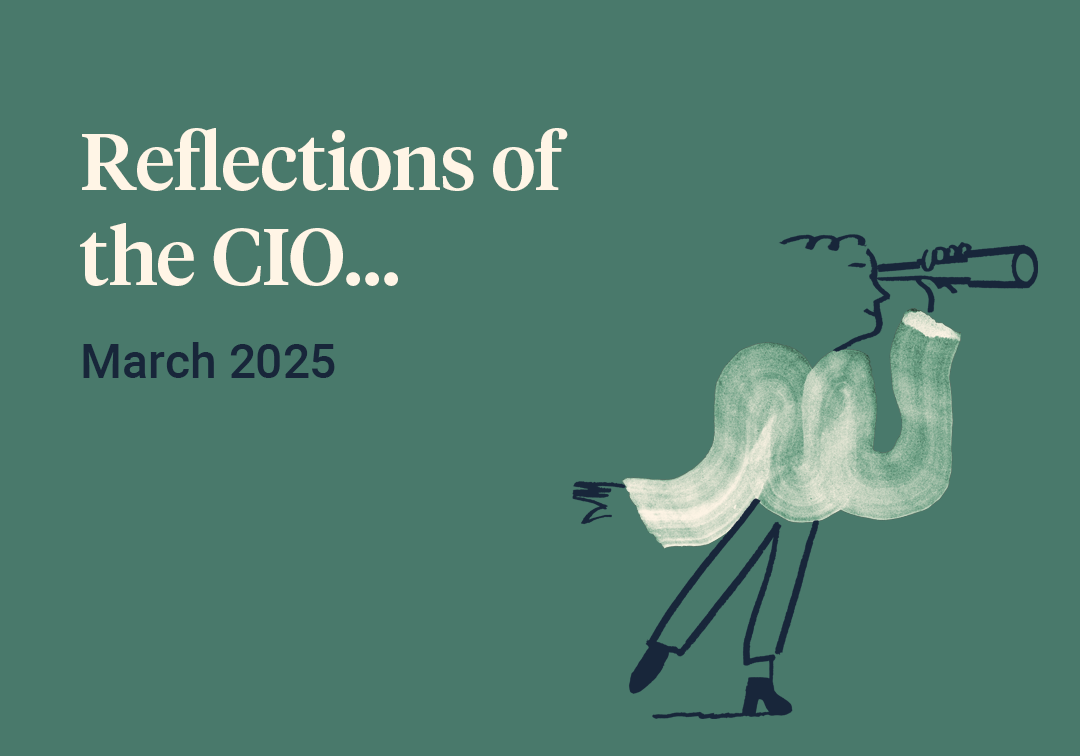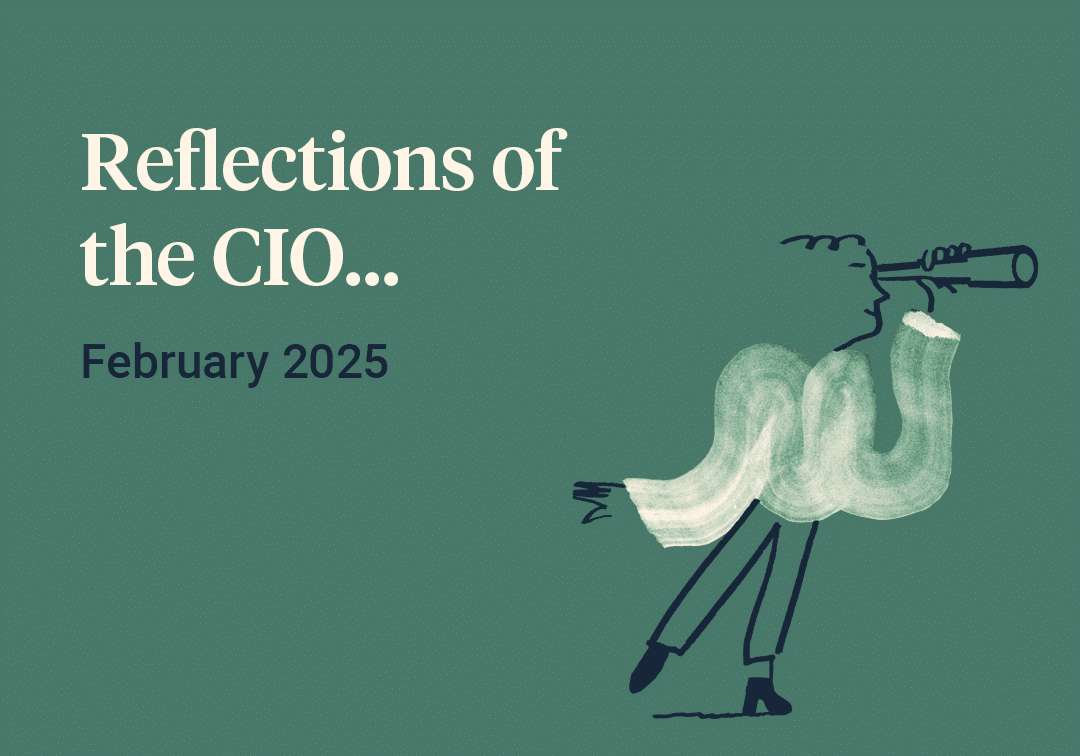February 2022 was the month during which Ukraine was invaded by Russia, ending the phoney war and sending shock waves around the world. The response to the invasion, particularly in the West, has been swift and aggressive. Financial sanctions have had a dramatic impact on Russian assets in the near term, although unfortunately, not enough to change events on the ground. The impact in the long term remains to be seen, but in the very near term, market reaction to the invasion has been predictably volatile but also rational and, at least initially, somewhat muted.
It is difficult to write about impacts to financial markets when one is fully aware of the reality of what this means to so many, however we have a job to do, and the objective tone of this and future reports does not mask our underlying horror at what is happening.
“The first weeks of February were a continuation of January’s weak trends, particularly in global bond markets which fell steadily over the month.”
The muted market reaction to the invasion during February was mainly due to what had happened before. January was a poor month for returns as both risky and safe assets fell in tandem, factoring in a future where interest rates and inflation would be higher and central bank support lower than for many years. In other words, falling markets were already discounting a higher ‘risk premium’ for a tougher investment environment before any impact from the Russian invasion. The first weeks of February were a continuation of January’s weak trends, particularly in global bond markets which fell steadily over the month. By the final week of the month, just prior to the full invasion, global stock and bond markets were at their lows for the year, down approximately -9% and -4% respectively. Both did little from that point into month end, during the initial days of the war.
The second reason for the initial muted market reaction to the invasion, is the fact that Russia and Ukraine are not large economies in a global context, meaning that the routes for transmitting the impact of events are narrow rather than broad. The main route is via commodity markets, where both nations are big players in oil, wheat and some industrial metals and any disruption brought about by the war will be felt here first. This is exactly what happened with oil moving up +10.7% in February and wheat up over +16%.
“Corporate and consumer balance sheets are strong and there is undoubtedly a store of pent up demand for goods, services and longer term capital expenditure.”
The fundamental factors behind the investment outlook, prior to the Ukraine invasion, remain in place. On the plus side economies continue their post Covid recovery, valuations are lower in several interesting assets and important trading countries like China are gently increasing their stimulus efforts. Corporate and consumer balance sheets are strong and there is undoubtedly a store of pent up demand for goods, services and longer term capital expenditure. Similarly, inflation remains high and interest rates are rising globally to counter their effect. The resulting tightening of liquidity conditions is driving poor sentiment and weak trading at the start of the year, after two good years for returns in the Covid era.
Into this mix we must now add the potential impact of persistently higher oil prices as a consequence of the war in Ukraine. So far sanctions are not stopping the flow of oil from Russia to the West as it is in neither’s interests to do so. There are also some potential mitigants to offset the impact of higher prices including the release of strategic petroleum reserves and a return of Iranian oil to the global market (bizarrely as part of a diplomatic process which Russia is embedded in). These actions will be useful but, in the end, won’t be enough to fully replace Russian production, should it be removed from the marketplace.
This ‘new’ top down risk from oil must now be weighed up alongside the existing, well known other factors, both positive and negative. Investor focus is now shifting to the potential impact of higher oil prices on inflation and ultimately growth. Inflation expectations are picking up again, as a result of the oil price spike, just at a point when consensus opinion had hoped that the peak had already been passed. The longer oil remains high the more it will weigh on the post Covid economic recovery. Central banks will have to balance the risks to growth with the need to control inflation, much as they did before, only this time with a possible high oil effect to factor in.
On balance, this set of risks nets down to an environment which is volatile but also one where asset price behaviour is rational and throwing up as many opportunities as it does threats. Risks and returns seem broadly balanced to us currently, with the major asset prices continuing to align better with reality. The speculative froth which had accumulated towards the end of 2021 has now evaporated and expectations are low. The outlook is complicated but still reasonable in our opinion and we will continue to monitor events closely, taking action when and if the opportunity set changes.
Portfolio Performance
Portfolios overall returned between -0.4% and -1.5% for the month. The strongest contributors were from commodity related exposures, for those portfolios able to hold them. Gold in particular which was up +6%. Value stocks continued to do better than growth stocks in equity markets. Geographically, unsurprisingly, it was areas outside of Europe and the emerging markets that performed best. The major detractors from performance were concentrated in risk assets, particularly equities, although as described above much of this weakness took place prior to the invasion. Bond markets were in general weak, continuing their trend of pricing in interest rate rises before rallying a little into month end as demand for safer haven assets increased.
On behalf of the Saltus Investment Committee, February 2022
Do you need help managing your investments?
Our team can recommend an investment strategy to meet your financial objectives and give you peace of mind that your investments are in good hands. Get in touch to discuss how we can help you.

Article sources
Editorial policy
All authors have considerable industry expertise and specific knowledge on any given topic. All pieces are reviewed by an additional qualified financial specialist to ensure objectivity and accuracy to the best of our ability. All reviewer’s qualifications are from leading industry bodies. Where possible we use primary sources to support our work. These can include white papers, government sources and data, original reports and interviews or articles from other industry experts. We also reference research from other reputable financial planning and investment management firms where appropriate.
The views expressed in this article are those of the Saltus Asset Management team. These typically relate to the core Saltus portfolios. We aim to implement our views across all Saltus strategies, but we must work within each portfolio’s specific objectives and restrictions. This means our views can be implemented more comprehensively in some mandates than others. If your funds are not within a Saltus portfolio and you would like more information, please get in touch with your adviser. Saltus Asset Management is a trading name of Saltus Partners LLP which is authorised and regulated by the Financial Conduct Authority. Information is correct to the best of our understanding as at the date of publication. Nothing within this content is intended as, or can be relied upon, as financial advice. Capital is at risk. You may get back less than you invested. Tax rules may change and the value of tax reliefs depends on your individual circumstances.
Related blog posts
About Saltus?
Find out more about our award-winning wealth management services…
Winner
Best Wealth Manager
Winner
Investment Performance: Cautious Portfolios
Winner
Top 100 Fund Selectors 2024
Winner
Best Places to Work 2024
£8bn+
assets under advice
20
years working with clients
350+
employees
97%
client retention rate




